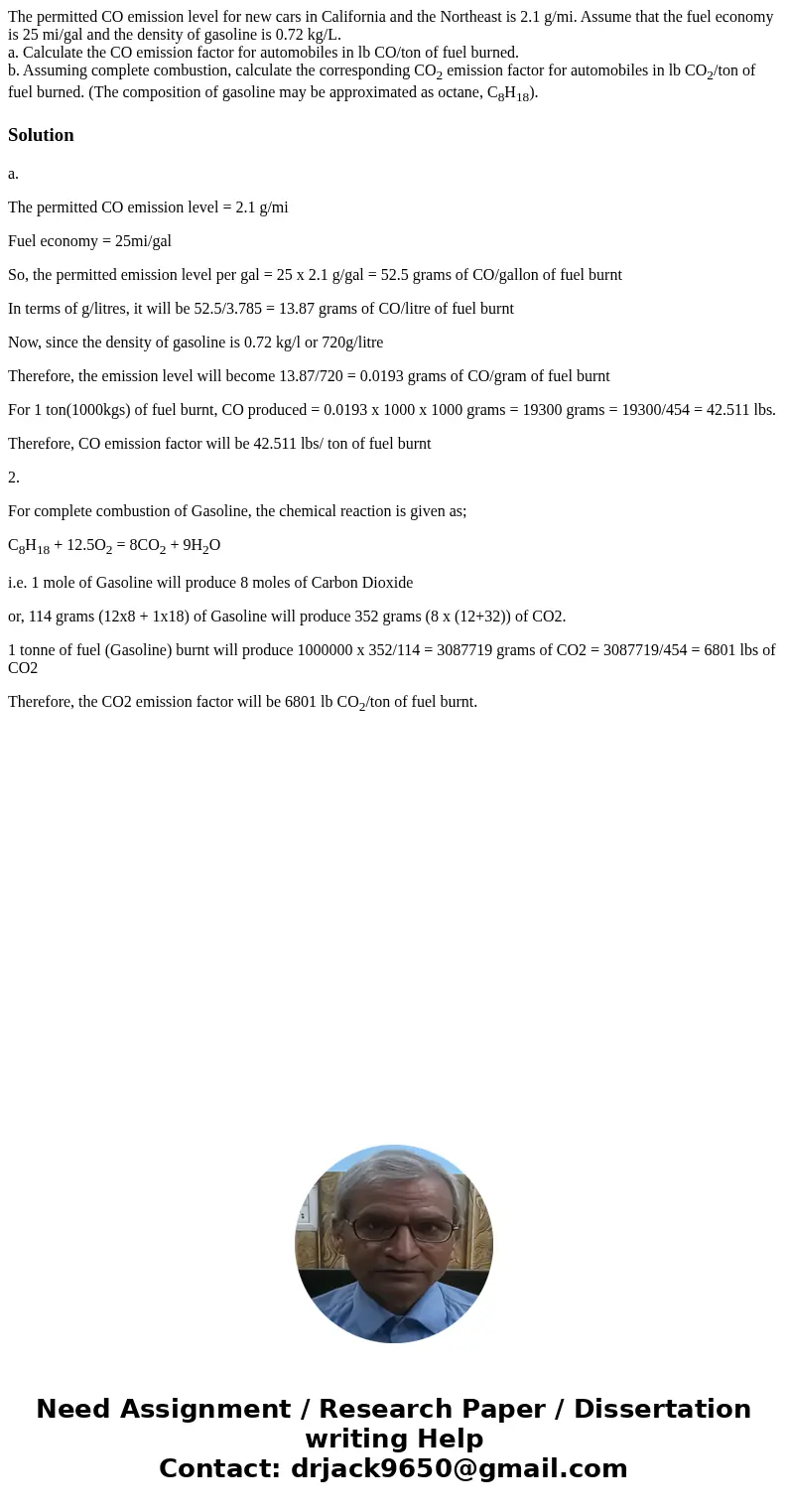The permitted CO emission level for new cars in California a
The permitted CO emission level for new cars in California and the Northeast is 2.1 g/mi. Assume that the fuel economy is 25 mi/gal and the density of gasoline is 0.72 kg/L.
a. Calculate the CO emission factor for automobiles in lb CO/ton of fuel burned.
b. Assuming complete combustion, calculate the corresponding CO2 emission factor for automobiles in lb CO2/ton of fuel burned. (The composition of gasoline may be approximated as octane, C8H18).
Solution
a.
The permitted CO emission level = 2.1 g/mi
Fuel economy = 25mi/gal
So, the permitted emission level per gal = 25 x 2.1 g/gal = 52.5 grams of CO/gallon of fuel burnt
In terms of g/litres, it will be 52.5/3.785 = 13.87 grams of CO/litre of fuel burnt
Now, since the density of gasoline is 0.72 kg/l or 720g/litre
Therefore, the emission level will become 13.87/720 = 0.0193 grams of CO/gram of fuel burnt
For 1 ton(1000kgs) of fuel burnt, CO produced = 0.0193 x 1000 x 1000 grams = 19300 grams = 19300/454 = 42.511 lbs.
Therefore, CO emission factor will be 42.511 lbs/ ton of fuel burnt
2.
For complete combustion of Gasoline, the chemical reaction is given as;
C8H18 + 12.5O2 = 8CO2 + 9H2O
i.e. 1 mole of Gasoline will produce 8 moles of Carbon Dioxide
or, 114 grams (12x8 + 1x18) of Gasoline will produce 352 grams (8 x (12+32)) of CO2.
1 tonne of fuel (Gasoline) burnt will produce 1000000 x 352/114 = 3087719 grams of CO2 = 3087719/454 = 6801 lbs of CO2
Therefore, the CO2 emission factor will be 6801 lb CO2/ton of fuel burnt.

 Homework Sourse
Homework Sourse